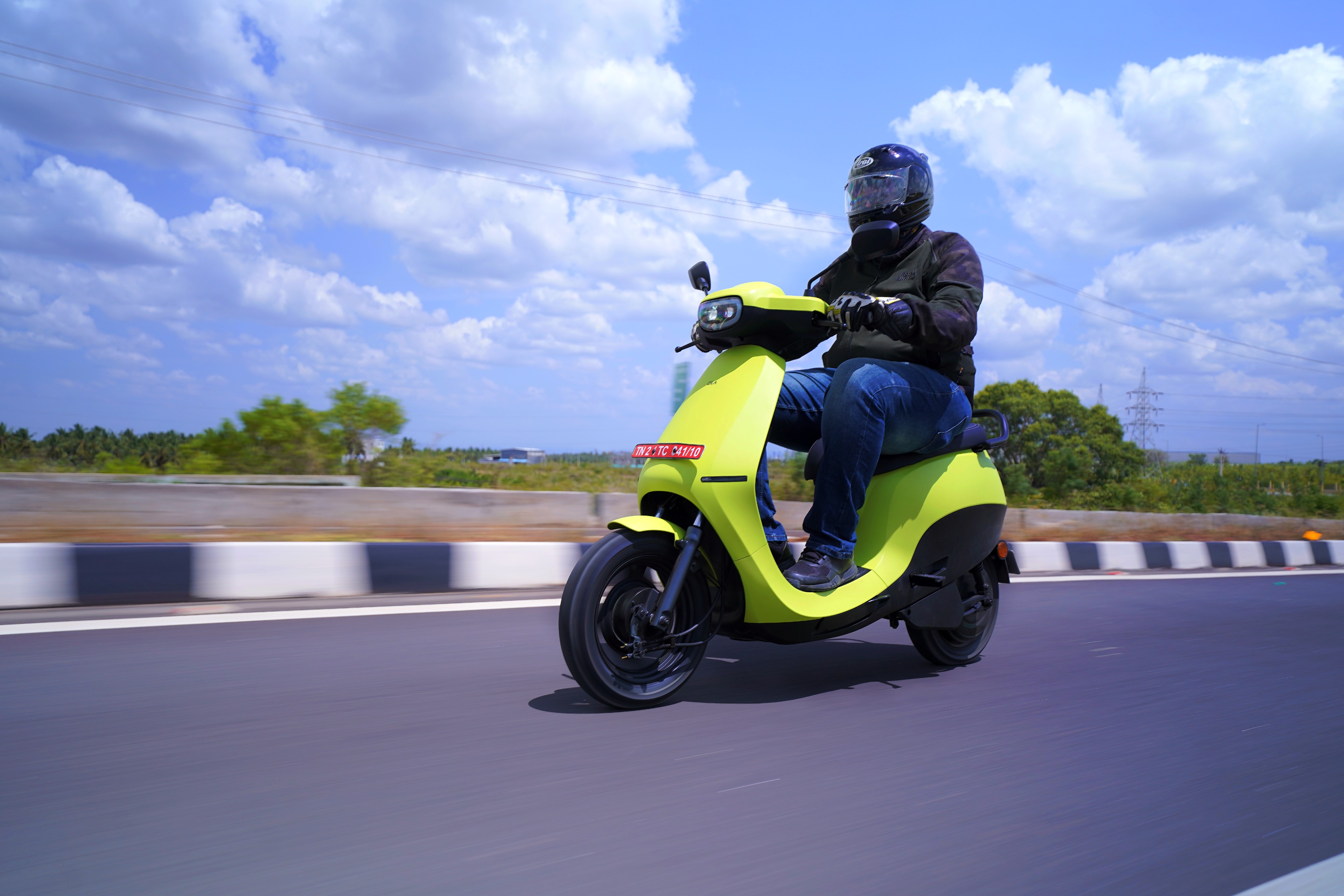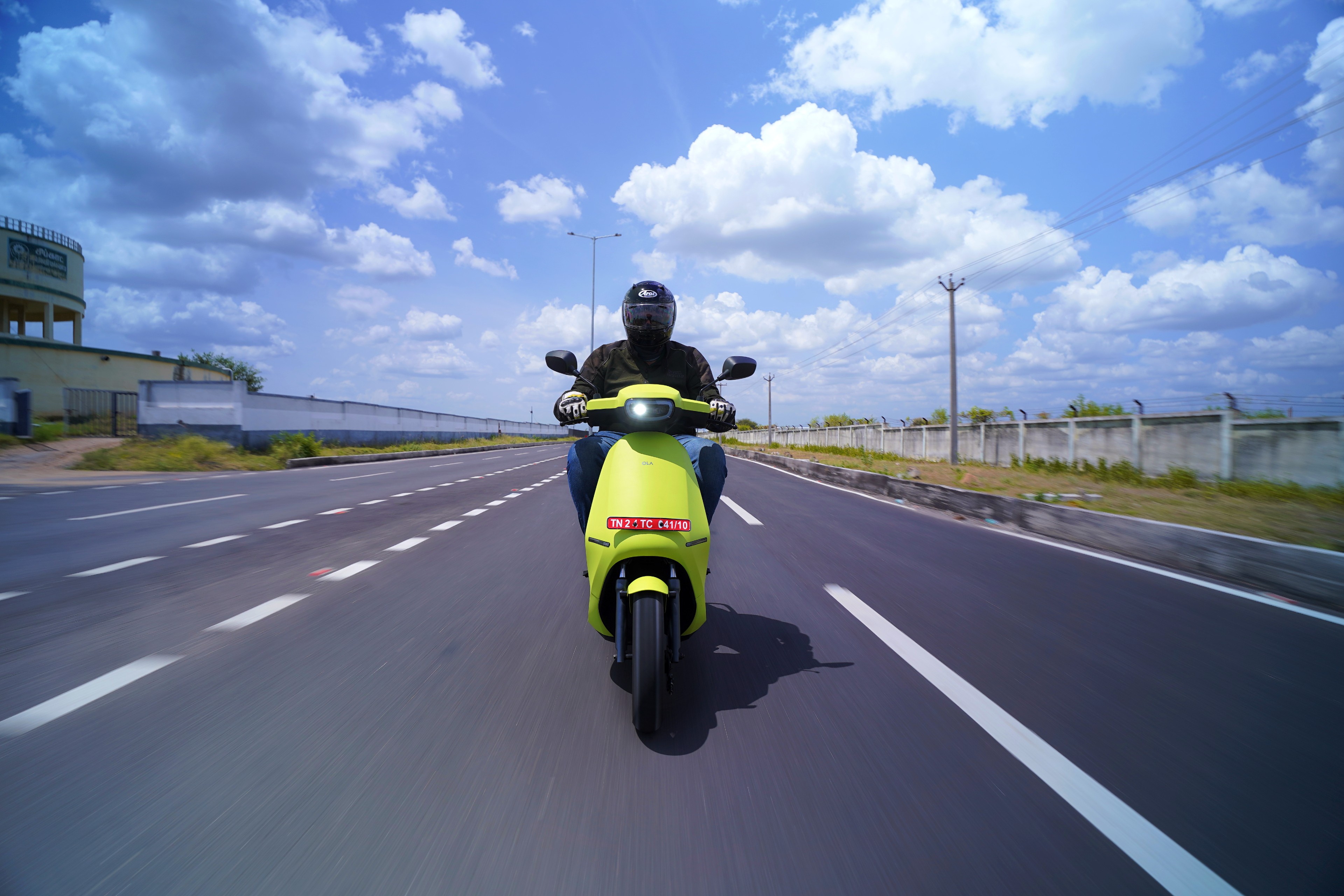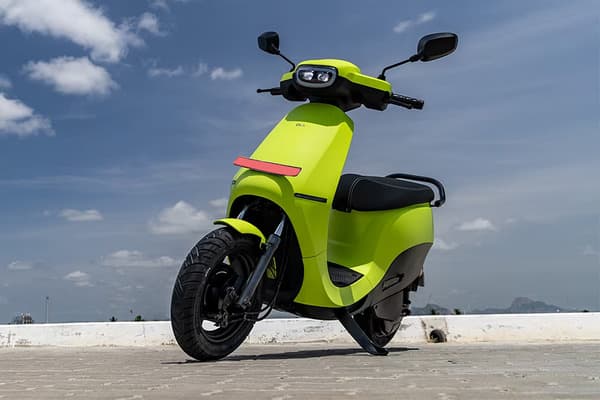Ola Electric S1 Air
Ola Electric S1 Air starting price is Rs. 1,19,999 in India. Ola Electric S1 Air is available in 1 variant and| Battery Capacity | 3 kWh |
| Max Speed | 90 kmph |
| Range | 101 km |
| Charging time | 4 Hours 30 Minutes |
About Ola Electric S1 Air
Ola Electric S1 Air price starts at ₹ 1.2 Lakhs and goes up to ₹ 1.2 Lakhs (Ex-showroom). Ola Electric S1 Air comes in 1 variants. Ola Electric S1 Air's top variant is STD.
₹1.2 Lakhs* | 90 Kmph 101 Km |
Ola Electric S1 Air Specifications and Features
| Body Type | Electric Bikes |
| Battery Capacity | 3 kWh |
| Charging Point | Yes |
| Mobile Connectivity | Yes |
| Headlight | LED |
| Range | 101 km |
| Charging Time | 4 Hours 30 Minutes |
Ola Electric S1 Air comparison with its competitors
| Model Name | Ola Electric S1 Air | Kinetic Green Flex | Ather Energy Rizta | Ola Electric S1 Pro | TVS iQube Electric | Ather Energy 450x |
|---|---|---|---|---|---|---|
| Price (Ex-Showroom) | ₹1.2 Lakhs Onwards | ₹1.1 Lakhs | ₹1.1 - 1.45 Lakhs | ₹1.4 - 1.47 Lakhs | ₹1.17 - 1.23 Lakhs | ₹1.26 - 1.29 Lakhs |
| Expert Ratings | 3.5 out of 5 | - | - | - | 4 out of 5 | 4.5 out of 5 |
| Battery Capacity | 3 kWh | 3 kWh | 2.9-3.7 kWh | 4 kWh | 4.56 kWh | 2.9-3.7 kWh |
| Range | 101 km | 120 km | 123-160 km | 181-195 km | 100 km | 111-150 km |
| Fuel Type | Electric | Electric | Electric | Electric | Electric | Electric |
| Transmission | Automatic | Automatic | Automatic | Automatic | Automatic | Automatic |
My Garage
Popular Ola Electric Bikes
- Popular
- Upcoming
Ola Electric currently holds a nearly 40 per cent market share in the electric scooter segment in India and the company is pushing for a larger piece of the pie with new and more affordable products. This is where the new S1 Air comes in. The brand’s most affordable offering yet takes all the good bits of the S1 Pro but crunches it into a more affordable price bracket in a bid to appeal to a wider set of customers.

Ola S1 Air: What is it?
The S1 Air is the more affordable e-scooter based on the company’s S1 platform. Initially unveiled in October 2022 at an introductory price of ₹80,000 (ex-showroom), the model has been through multiple transitions over the last 10 months including several battery and motor options before making its way to customers. The final version on sale is now priced at ₹1.10 lakh (introductory), which will increase to ₹1.20 lakh (ex-showroom, after subsidy) after August 15, 2023. It’s about ₹30,000 cheaper than the current Ola S1 Pro, which translates to certain missing features.

Ola S1 Air: New Gen2 platform
The S1 Air is based on the new Gen2 platform that will go on to underpin future models from the company including an all-new entry-level offering. Ola says the new frame is now 14 per cent lighter and much stiffer than the Gen1 models. It also promises 25 per cent lower manufacturing costs when compared to its predecessor. Ola has also moved to a redesigned battery pack that comes with an improved BMS and stronger insulation for added safety.
The new platform enables a flat floorboard which makes it easier to rest your feet as well as store luggage or knick-knacks between the legs. The front apron pocket has also been revised to hold a smartphone more securely. The under-seat storage space has gone down from 36 litres to 34 litres on the scooter, which still remains massive by conventional scooter standards.

Ola S1 Air: How is the styling different?
The S1 Air immediately comes across as an Ola product with nearly the same styling as the S1 Pro. Differences are obvious and its build-to-cost nature is far more apparent. The new neon green scheme looks nice but the matte finish doesn’t look premium enough. It will also be more prone to attracting dust and smudge marks in the long run. There’s black cladding on the lower section of the side panels that gives the model a dual-tone treatment, while the lower panel is only half to cover the swingarm on either side.
Ola has also revised the seat cover that looks basic without changing the design itself, while the split grab rails from the S1 Pro have been replaced with the new utilitarian-looking chunky single unit. Cost-cutting is also evident with the new pressed steel wheels replacing the fancier alloys on the scooter and colour options have also gone down from 12 on the S1 Pro to six on the S1 Air.
That said, the Ola S1 Air does not come across as a solidly-built product. It feels a bit too plasticky and there’s a certain flimsy feel to the scooter. This feeling gets further accentuated by the muted finishing over the fibre panels as well as the exposed welding. It’s one of the big changes we would like to see in the future versions including the addition of more metallic colour options.

Ola S1 Air: How does it ride?
The S1 Air gets a more cost-effective BLDC hub motor instead of a sophisticated mid-drive unit on the S1 Pro. The electric motor is tuned to produce 4.5 kW (6 bhp) of peak power, while continuous power output stands at 2.7 kW (3.6 bhp). That’s nearly half when compared to the S1 Pro. The ‘Hyper’ mode has been given a miss and so is the lightning-quick acceleration. Instead, you only get the Normal and Sport modes that do a fairly good job. On the go, the S1 Air takes time to build speed but is reasonably quick in both Normal and Sport and will easily keep up with city speeds. The top speed is the same at 90 kmph. Sure, it’s not giving you any goosebumps but the trade-off is a much more accessible price tag.
That said, power delivery isn’t the most seamless as you open the throttle and we would’ve liked a slightly smoother throttle response. The reverse mode particularly feels jerky and the sudden push can get discomforting. We also faced issues with “reduced performance” as the scooter kept switching back to Normal mode from Sport after every few kilometres. Considering, we were riding on a sunny day, heating issues seem to be cause. Those wanting to stay in Sport for longer will have their frustrations.
Concerning cornering effort, the S1 Air comes across as confident and there’s little to disturb its cornering effort. The high ground clearance also ensures there’s enough room to tackle undulations and even some deep potholes on the road.
Ola S1 Air: How’s the new suspension?
Ola has moved to telescopic forks on the S1 Air with twin shock absorbers at the rear. The setup is far simple when compared to the current S1 Pro and a big departure from the front monoshock unit on the S1 Pro. The transition, we are told, is a result of the cost-effectiveness that the telescopic forks provide. The company also says that the telescopic forks manage to give the same results as the more sophisticated monoshock unit without compromising on comfort.
The ride quality itself is comfortable but some of the harsh bumps do translate to the rider's back. Most riders will have little to complain about comfort. But the pillion seat feels a bit too wide, especially for kids or short folks with the rather expansive spread angle.
Ola S1 Air: Is it feature rich?
The S1 Air moves to a centralised computing system that brings faster processing, diagnostics, and serviceability to the scooter. The model also gets online support with OTA updates bringing new features in the future. You continue to get the 7-inch touchscreen infotainment system with Bluetooth connectivity, password-protected ignition, keyless access to the storage space, Digi-locker, navigation, UI customisation options and more. The party mode is available as well with integrated speakers and so is cruise control and the reverse mode.
What you don't get is fast charging on the S1 Air. Ola claims a full charge from 0-100 per cent in five hours. This also means S1 Air users will not be able to utilise the company's 1000+ network across the country.
Ola S1 Air: What about range?
The S1 Air uses a 2.98 kWh battery pack with a claimed range of 125 km on a single charge in the Normal mode and reduces to 87 km in the Sport mode.

Ola S1 Air: Verdict
The Ola S1 Air feels built to a cost and that's not a bad thing. It could be less flimsy in certain places and quality issues like panel gaps should be addressed on the series production versions. The bigger omissions include performance, fast charging and a premium finish, but when it comes to value, there's plenty else for the price. Back this up with Ola's expansive presence pan India, which has been built in an impressively fast timeframe. The S1 Air could very well be considered by the “family man/woman” who is not looking to win races but to make the most out of their commute every day. We'll only recommend taking a test ride first.




